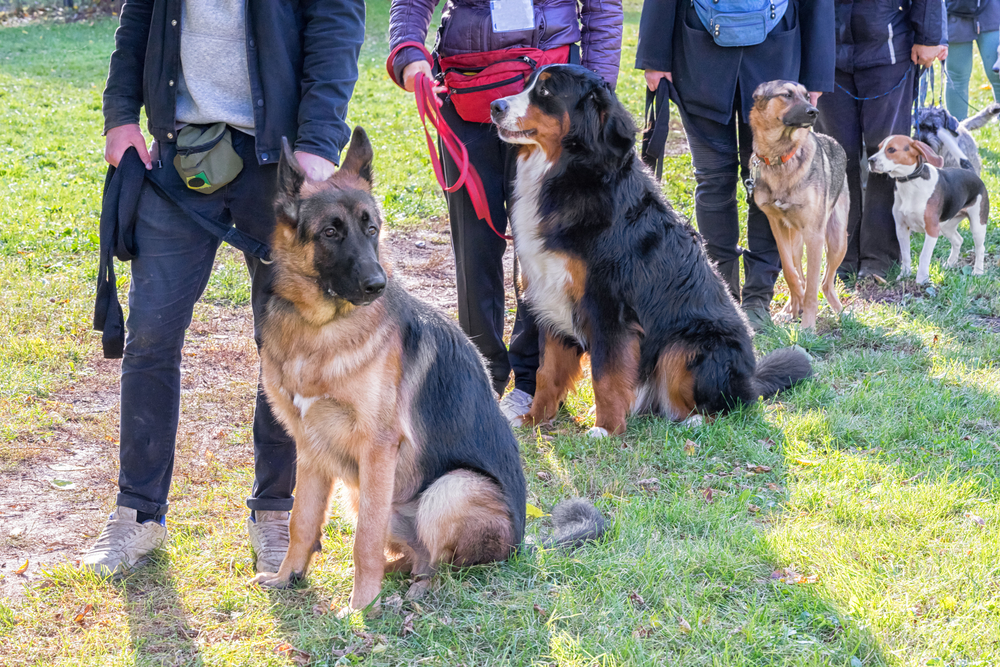At first glance, organizing a casual dog playdate at the park or joining a local dog meetup group might seem like a simple way to socialize and train your dog. The dogs get to run around, you get to chat with other owners, and everyone goes home tired—that sounds like a win, right? While these gatherings can provide some exercise and basic interaction, they don’t come close to the depth of learning that happens in a structured training environment.
When it comes to real progress, the difference between professional vs DIY dog training lies in the details: structure, safety, guidance, and consistency. Group classes led by skilled trainers, like those offered at Innovative K9 Academy, deliver results that casual social time simply can’t match.
Structure with Purpose
DIY meetups often lack clear direction. One week the dogs may just run together, the next week someone might try a sit-and-stay exercise, and the week after that, the group could fall back into chaotic play. Without a plan, there’s no steady progression of skills, and dogs learn inconsistently.
Professional classes, on the other hand, are built around lesson plans designed to gradually challenge both dogs and owners. Each week builds on the previous one, creating a sense of momentum. The result is not only a dog that learns new skills but also an owner who develops confidence and consistency in handling.
At Innovative K9 Academy, classes are designed with clear goals—introducing new commands, reinforcing good manners, and helping dogs stay focused even when surrounded by distractions. This purposeful structure ensures that every minute of class time counts.
Safety First, Always
When multiple dogs gather without professional oversight, safety can become a concern. Not every owner recognizes the signs of stress, fear, or over-arousal in dogs. A wagging tail doesn’t always mean happiness—it can also signal tension. Without someone experienced to step in, small issues can escalate into fights or negative experiences that set training back.
Professional trainers are skilled at reading canine body language. They can intervene before a situation gets out of hand, ensuring every interaction is positive. Dogs with different temperaments are matched carefully, and activities are managed so that shy dogs build confidence while energetic dogs learn self-control. This attention to safety simply isn’t guaranteed in DIY environments.
Guidance from Experts
Another major difference lies in expertise. In DIY groups, you’re relying on the collective knowledge of other dog owners—some of whom may be brand new to training themselves. Advice is often based on personal anecdotes rather than proven methods, and while well-meaning, it can sometimes do more harm than good.
In contrast, professional trainers bring years of experience, formal education, and tested methods to every class. They understand how to apply techniques like positive reinforcement, desensitization, or leash handling skills in a way that works for both the dog and the owner. They also know how to tailor guidance to suit different learning styles, ensuring no dog is left behind.
Consistency That Drives Progress
Training is not a one-time event—it’s about repetition and reinforcement. DIY meetups may skip weeks, vary activities, or allow distractions to take over. Dogs thrive on consistency, and without it, progress stalls.
Professional group classes ensure a steady schedule and consistent messaging. Owners learn how to use the same cues, rewards, and corrections week after week. This kind of reliability is what transforms basic commands into lasting habits. A sit-stay in the living room is easy; holding that same command in a room full of excited dogs is where true progress happens.
Teaching Owners as Much as Dogs
Perhaps the biggest difference between professional training and DIY gatherings is the focus on educating owners. Dogs may be the students, but their humans are the ones who carry the lessons forward into daily life.
In professional classes, trainers teach owners how to deliver commands clearly, time rewards correctly, and manage their dog’s energy in different situations. They also coach owners on how to stay calm, consistent, and confident—qualities dogs instinctively respond to.
This human education is what makes training stick long after the class ends. DIY meetups rarely provide this kind of structured owner learning, which means the progress is often limited to the duration of the playdate.
Why Professional Classes Deliver Long-Term Value
While casual social time with other dogs has its place, it cannot replace the value of professional training. Group classes aren’t just about having fun in the moment—they build skills that last a lifetime. They prepare your dog for real-world situations, from greeting guests politely to walking calmly in a busy neighborhood.
Families who have joined Innovative K9 Academy group classes often notice a transformation that goes beyond obedience. Dogs gain confidence, learn better manners, and become more reliable companions. Owners feel empowered with knowledge and tools they can use every day, long after class has ended.
The difference boils down to this: DIY meetups offer temporary playtime. Professional classes provide lasting skills, safer experiences, and stronger bonds between owners and dogs.
Final Thoughts
Socializing your dog in casual settings can be enjoyable, but if your goal is to build reliable obedience, boost confidence, and create a calm, well-mannered companion, professional training is the better choice. The structure, safety, and guidance offered in group classes set them apart from DIY efforts in every way.
When you choose a professional training program, you’re not just giving your dog an activity—you’re giving them a foundation for success. And with the right trainer by your side, that investment pays off in years of happier walks, smoother social interactions, and a stronger bond with your four-legged friend.

